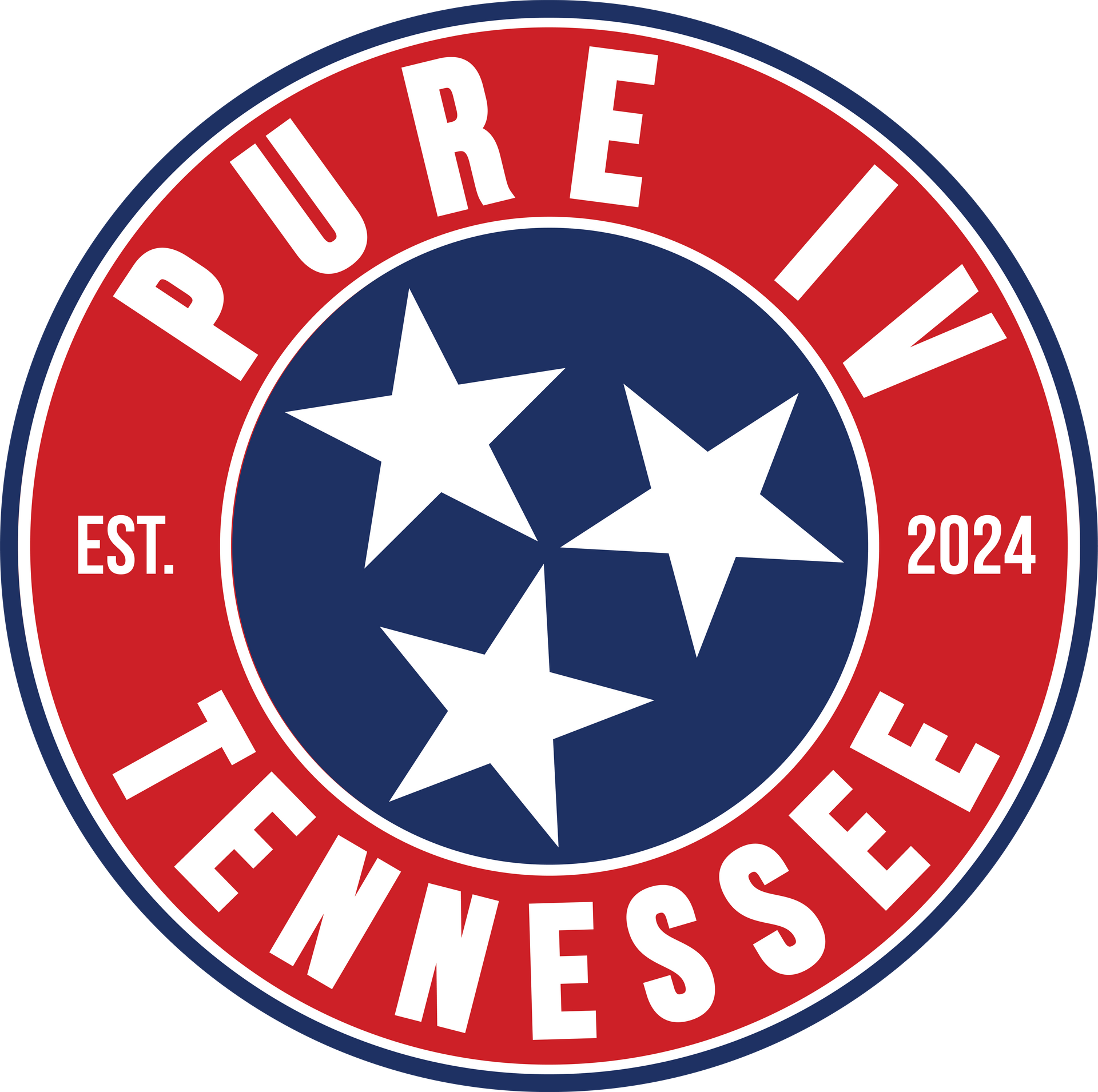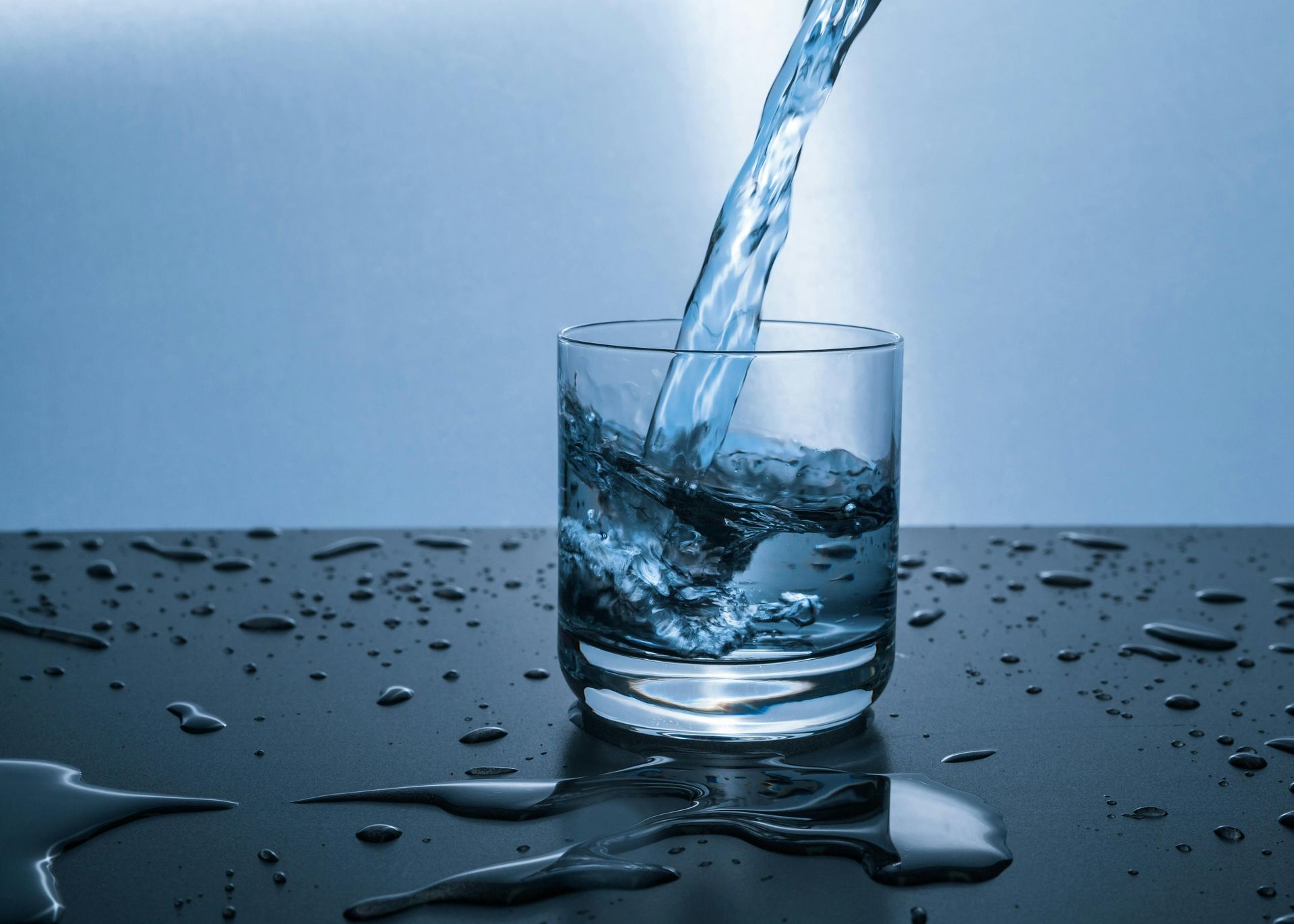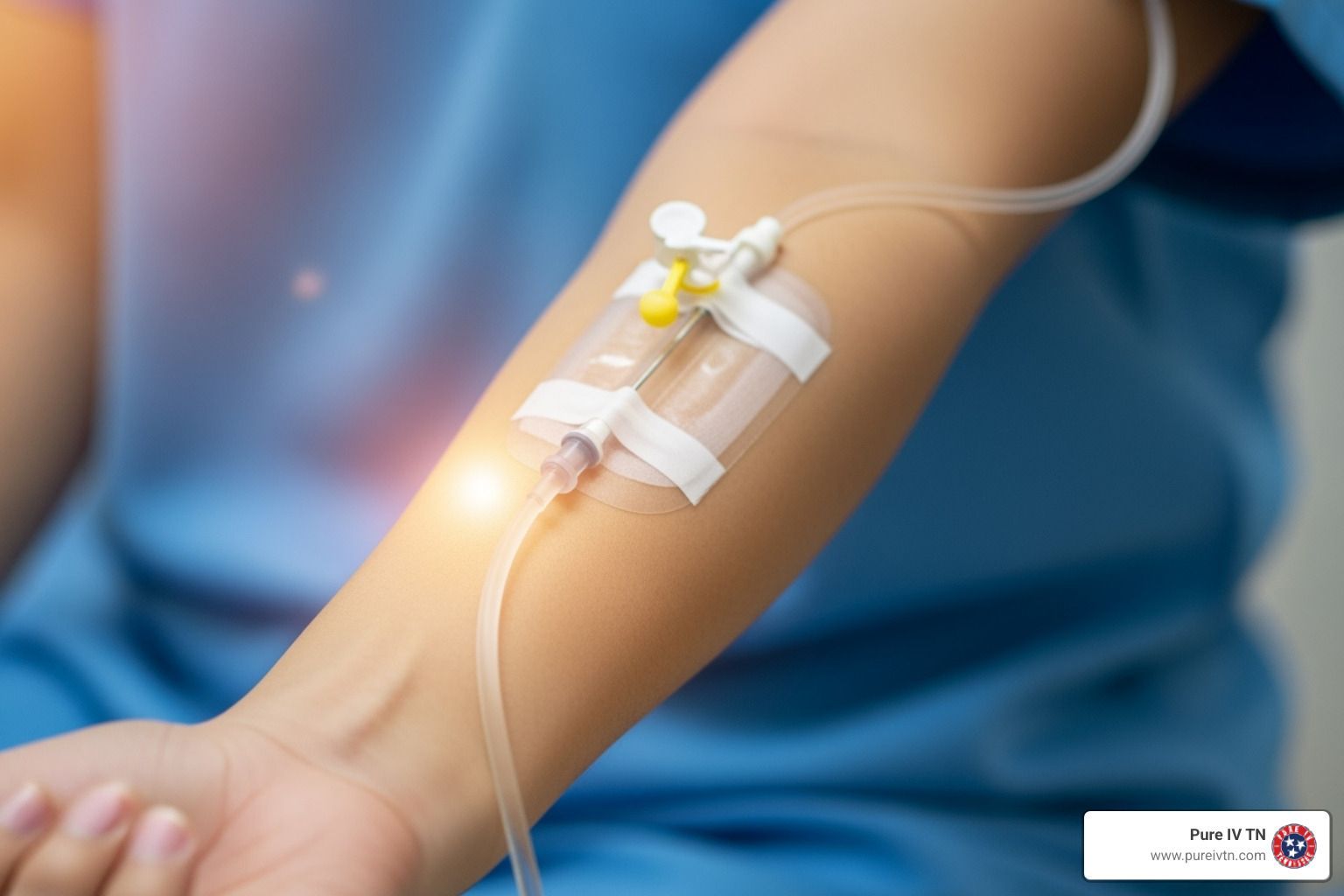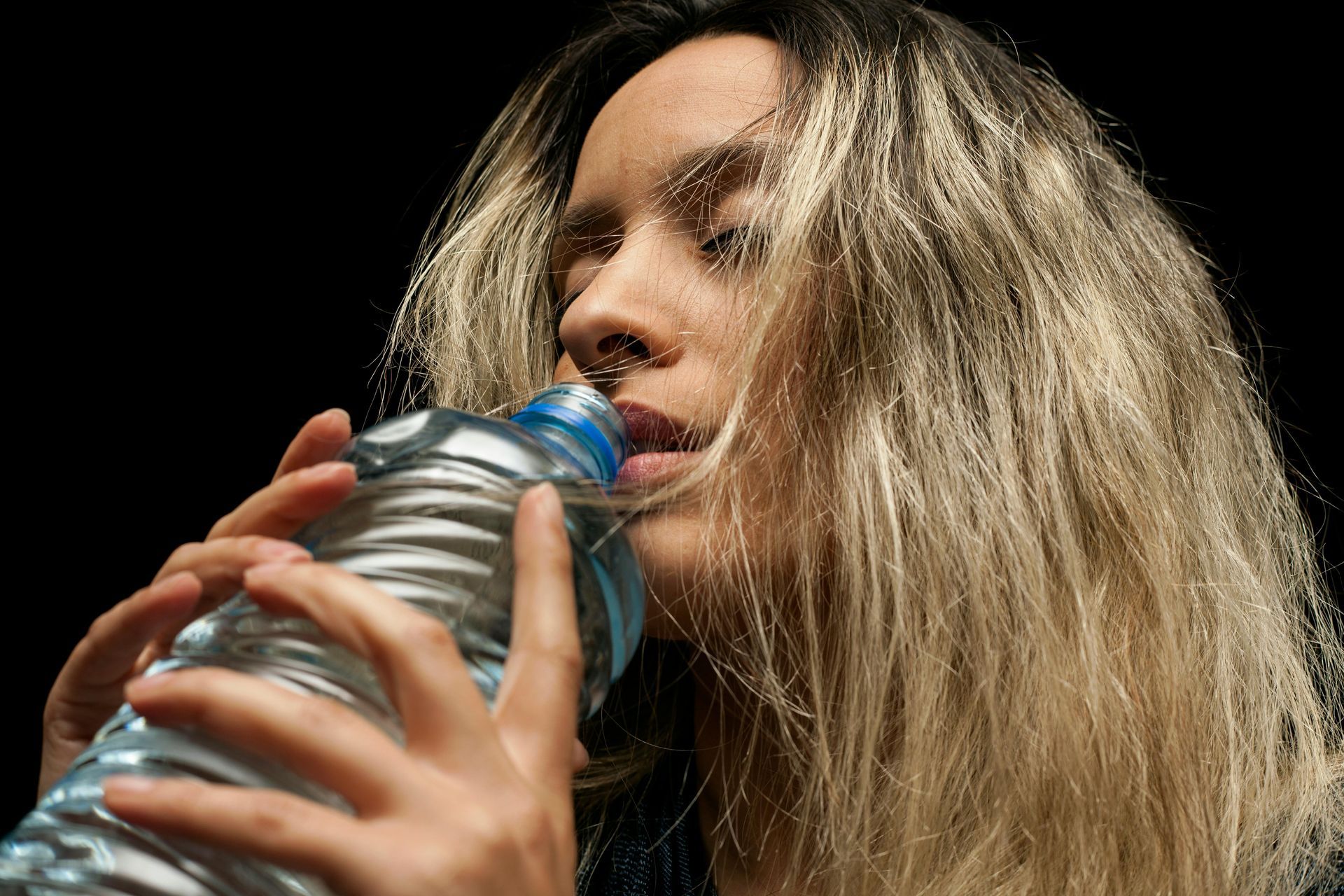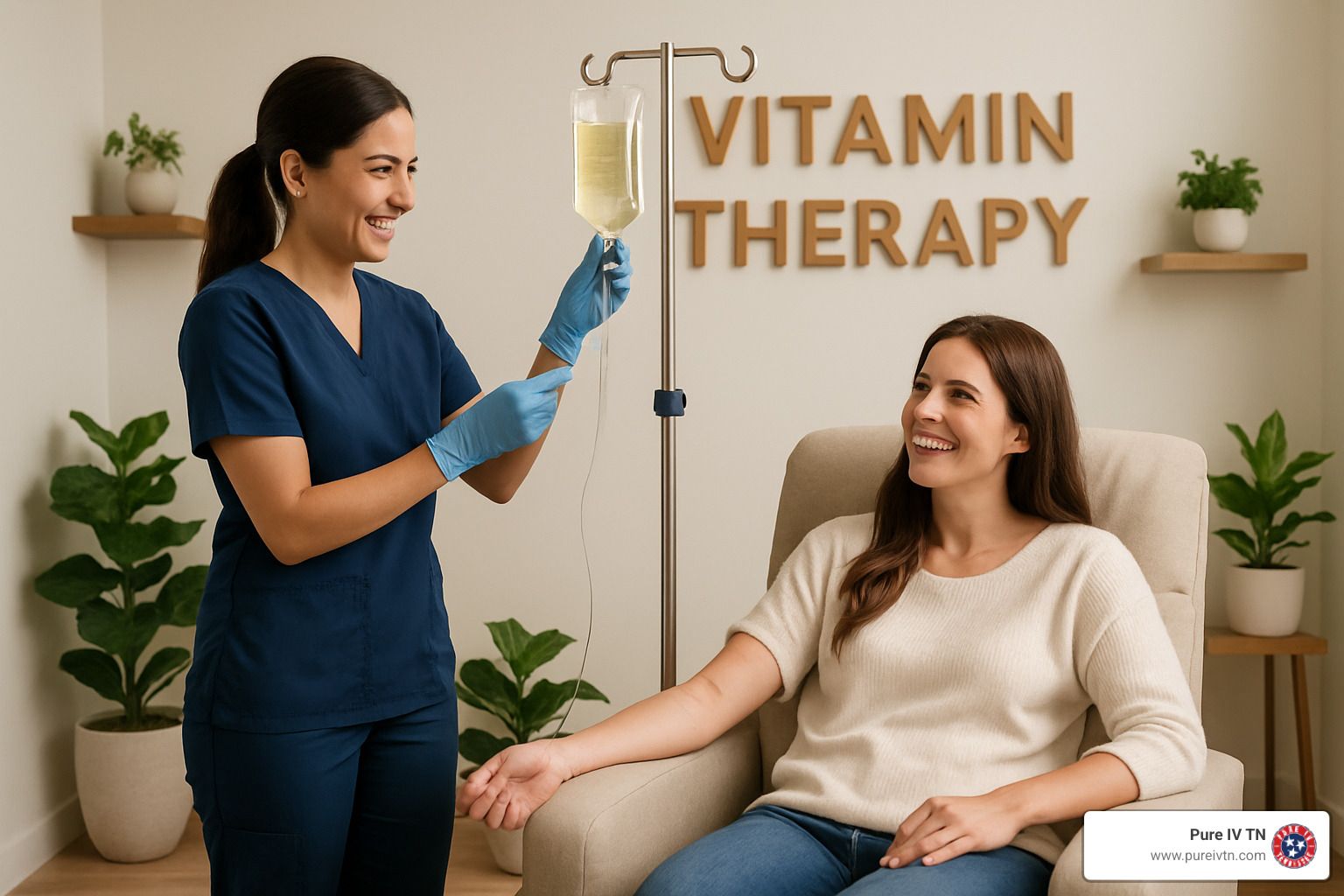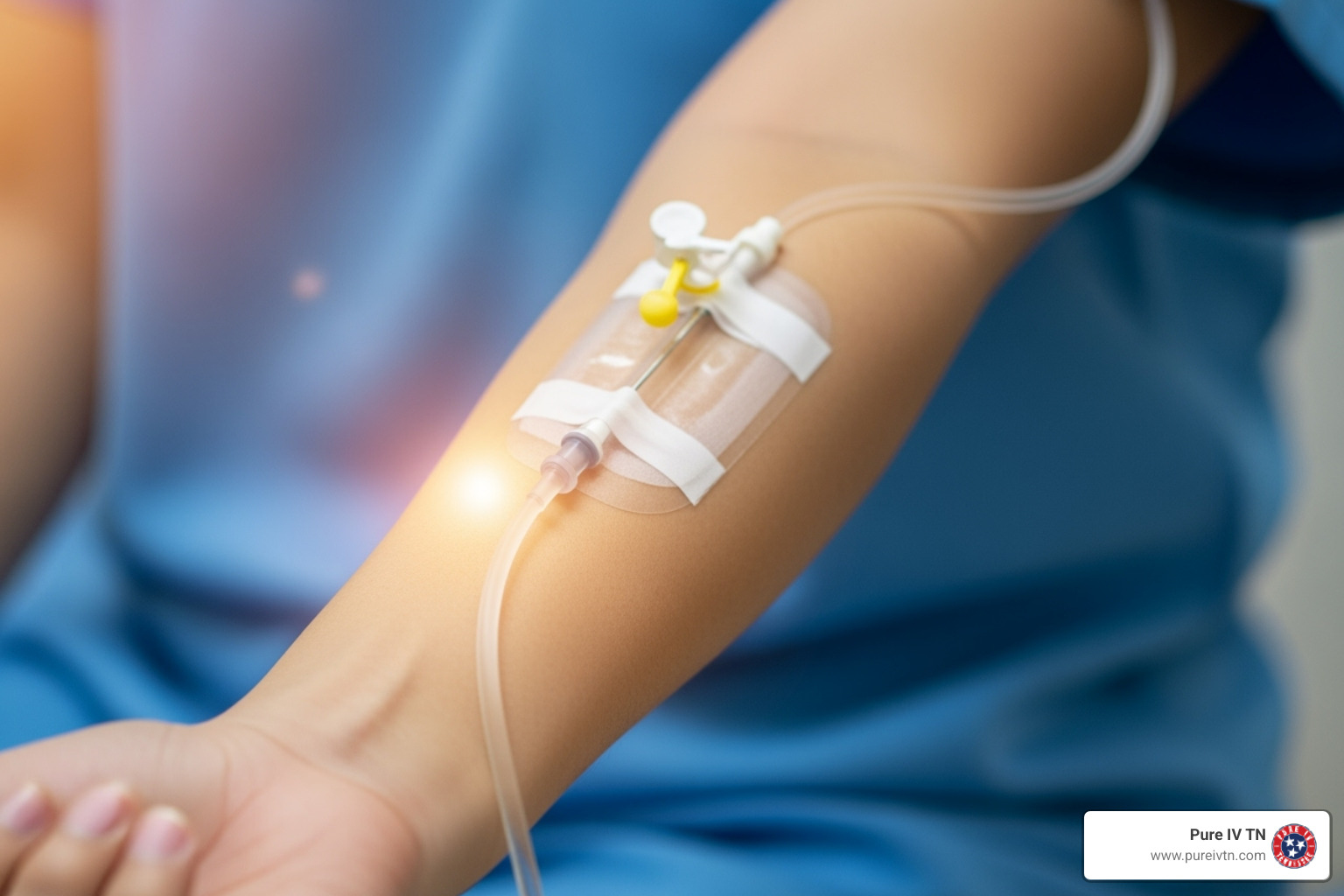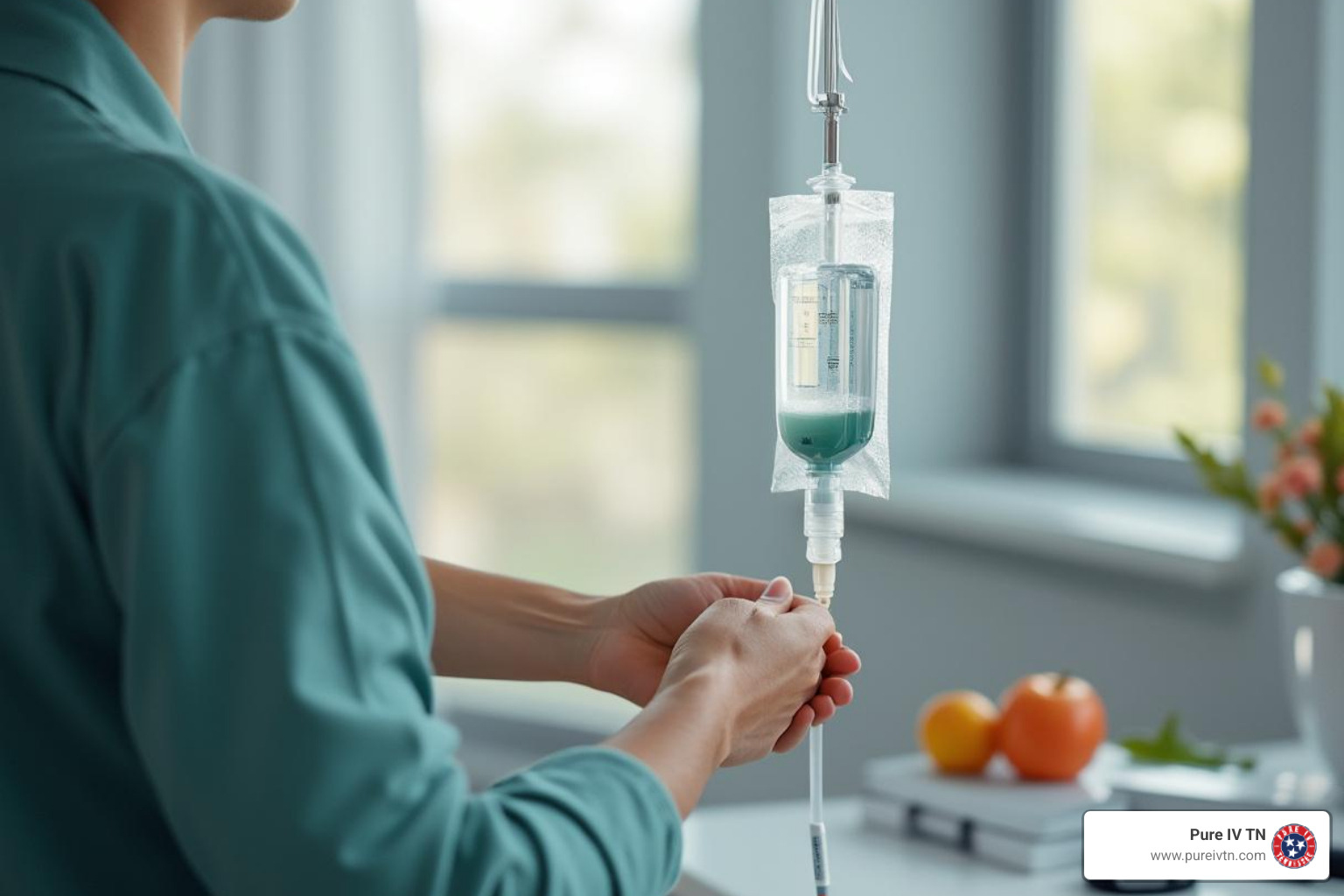High Hopes or High Altitude Hoax? Liquid IV Reviewed
Why Altitude Sickness Demands Better Hydration Solutions

Is Liquid IV good for altitude sickness? Here's what you need to know:
Quick Answer:
- Helpful but limited - Liquid IV can support hydration at altitude but won't prevent or cure altitude sickness
- Better than plain water - The electrolyte blend helps your body absorb fluids more efficiently
- Not a medical treatment - Severe altitude sickness requires descent and professional care
- Best for mild symptoms - Works for dehydration-related fatigue but not oxygen-related issues
Whether you're planning a ski trip to Colorado or hiking in the Rockies, altitude sickness can turn your trip into a nightmare. The combination of lower oxygen levels and rapid dehydration at high elevations creates a perfect storm for headaches, nausea, and exhaustion.
At altitudes above 8,000 feet, your body loses water faster through increased breathing and urination. The dry mountain air accelerates this process, while your natural thirst signals become less reliable. This is where oral rehydration solutions like Liquid IV claim to make a difference.
But does mixing a powder packet really help with altitude sickness? Or is it just expensive flavored water with good marketing?
As Joseph Lopez from Pure IV Tennessee, I've treated countless clients experiencing altitude sickness symptoms during their mountain trips, and the question "is liquid iv good for altitude sickness" comes up frequently in our mobile IV consultations. My experience with both oral hydration products and direct IV therapy gives me unique insight into what actually works at elevation.

Understanding Altitude Sickness & Hydration Needs
Picture this: you're standing at 8,000 feet, breathing hard after what felt like a simple walk to the parking lot. Your head pounds, your stomach churns, and you're wondering if that mountain vacation was such a great idea after all. Welcome to altitude sickness – your body's not-so-subtle way of saying "we're not in Kansas anymore."
Altitude sickness isn't just about feeling winded. It's your body's response to a dramatic drop in oxygen availability and air pressure as you climb higher. At 8,000 feet, oxygen levels plummet by about 25% compared to sea level.
The three main forms range from annoying to dangerous. Acute Mountain Sickness (AMS) brings headaches, nausea, and fatigue. High Altitude Cerebral Edema (HACE) involves brain swelling and can be life-threatening. High Altitude Pulmonary Edema (HAPE) causes fluid buildup in the lungs and requires immediate descent.
Common symptoms include persistent headache, nausea and vomiting, dizziness, fatigue, difficulty sleeping, loss of appetite, and liftd heart rate. If you've ever wondered "is liquid iv good for altitude sickness" while dealing with these symptoms, you're not alone.
Scientific research on altitude effects shows that your body's natural thirst response becomes blunted at high elevations. This means you don't feel as thirsty even when you're becoming dehydrated – a dangerous combination when you're already losing water at an accelerated rate.

Why Dehydration Hits Harder Up High
The dry mountain air is like a moisture vacuum for your body. At altitude, humidity levels often drop below 20%, compared to the 40-60% you're used to at sea level. Every breath pulls moisture from your body.
Your kidneys also work overtime at altitude, producing more urine as they try to help your body adapt to lower oxygen levels. This process, called altitude diuresis , can lead to significant fluid loss in the first few days of ascent.
Sweat evaporation happens much faster in the thin, dry air, so you might not even notice you're sweating during physical activity. This invisible water loss can quickly lead to dehydration without obvious warning signs.
Role of Electrolytes in Prevention
Electrolytes become crucial at altitude because they help your body retain and actually use the water you're drinking. Sodium helps your body hold onto water and maintain blood pressure. Potassium supports muscle function and nerve signaling, while magnesium aids muscle relaxation and can help ease altitude headaches.
The science behind glucose-sodium cotransport explains why products like Liquid IV make their hydration claims. When sodium and glucose are present together in the right ratio, your small intestine can absorb water up to three times faster than plain water alone. This improved absorption becomes especially important when your body's fluid metabolism is already compromised by altitude.
What Is Liquid I.V. and How Does It Work?
If you've wandered down the health aisle lately, you've probably spotted those colorful packets of Liquid I.V. promising to boost your hydration. But what exactly is this powder, and how does it claim to work better than plain water?
Liquid I.V. is essentially a modern twist on oral rehydration therapy - the same life-saving treatment doctors have used for decades to treat dehydration. The company has taken the basic science of Cellular Transport Technology (CTT) and packaged it into convenient single-serve packets that you mix with 16 ounces of water.
The formula follows the World Health Organization's guidelines for oral rehydration solutions, though it's been tweaked for taste and loaded with extra vitamins. Think of it as medical-grade hydration dressed up for the wellness crowd .
What makes it different from just drinking water? The magic lies in the precise ratio of ingredients. When you mix that packet into your water bottle, you're creating a solution that your digestive system can absorb much faster than plain H2O alone.
The product is non-GMO, gluten-free, with no artificial preservatives , and comes in flavors that actually taste good. Plus, those small packets are incredibly portable - perfect for tossing in your backpack before a mountain trip.

Key Ingredients Relevant to Altitude
When you're asking "is liquid iv good for altitude sickness," it helps to understand what's actually in that packet and why it might matter at elevation.
The star players are sodium and glucose working as a team . Each packet contains 500mg of sodium and 11 grams of sugar. These two ingredients trigger glucose-sodium cotransport in your small intestine - basically, they hold hands and help pull water into your bloodstream faster than water can get there on its own.
Potassium at 370mg per packet becomes your friend at altitude because your muscles and heart are working overtime in the thin air. This mineral helps keep everything functioning smoothly when your cardiovascular system is already stressed.
The B-vitamin blend (B3, B6, and B12) supports your energy metabolism, which becomes more important when your body is struggling to get enough oxygen from each breath.
Vitamin C rounds out the formula as an antioxidant. While the 60mg dose isn't massive, it may help combat some of the oxidative stress your body experiences when it's working harder to adapt to altitude.
Marketing Claims vs Reality
Here's where we need to pump the brakes a bit on the hype. Liquid I.V. loves to tout that it provides "3x the hydration of water alone," and while there's science behind this claim, it comes with important caveats.
That 3x figure comes from controlled laboratory studies comparing absorption rates at sea level. But when you're at 10,000 feet dealing with altitude sickness, your body's hydration needs and absorption capacity change dramatically. The product can still help you absorb water more efficiently than plain water , but that dramatic "3x" claim might not hold up in the thin mountain air.
The reality is more nuanced. Liquid I.V. works well for what it's designed to do - help your body absorb and retain fluids more effectively. But it's not a magic bullet, especially when "is liquid iv good for altitude sickness" involves much more than just hydration challenges.
Is Liquid IV Good for Altitude Sickness? Evidence & Expert Opinions
So here's the big question everyone's asking: is liquid iv good for altitude sickness? I wish I could give you a simple yes or no answer, but the truth is more nuanced than the marketing materials suggest.
The honest reality is that there's surprisingly little clinical research specifically testing Liquid I.V. or similar products for altitude sickness. Most of what we know comes from broader studies on oral rehydration solutions, plus plenty of anecdotal reports from hikers, athletes, and our own clients who've tried it during mountain trips.
What the research does tell us is crystal clear: proper hydration is absolutely crucial for altitude acclimatization. Studies consistently show that even mild dehydration can make altitude sickness symptoms worse and slow down your body's natural adaptation process.
From my experience treating clients with mobile IV therapy , I've learned that hydration at altitude isn't just about drinking more water - it's about helping your body actually absorb and use that water effectively.

"is liquid iv good for altitude sickness" — What Limited Studies Suggest
While we don't have specific studies on Liquid I.V. for altitude sickness, research on oral rehydration solutions shows they can be 2-3 times more effective than plain water for treating dehydration. A small pilot study comparing electrolyte drinks to water at altitude found that participants using electrolyte solutions maintained better hydration status and reported fewer mild symptoms.
But here's the important caveat: these studies typically focus on dehydration-related symptoms rather than the oxygen-related aspects of altitude sickness. This distinction matters because altitude sickness isn't just about being dehydrated - it's primarily about your body's struggle to get enough oxygen from the thin air.
The glucose-sodium cotransport mechanism that makes Liquid I.V. work can definitely help your body absorb water more efficiently. But it can't magically increase the oxygen content in your blood or fix the underlying cause of altitude sickness.
User Experiences: "is liquid iv good for altitude sickness" on the Trail
From our mobile IV consultations with clients who've used Liquid I.V. at altitude, the feedback is mixed but generally positive. Many hikers report faster recovery from mild dehydration symptoms and better energy levels during day hikes compared to drinking only water.
The convenience factor gets high marks too. Backpackers love the lightweight packets, and the electrolyte blend does seem to help maintain energy levels during long mountain days.

However, the limitations become clear when symptoms get more serious. Most users report that while Liquid I.V. helped with fatigue and mild dehydration , it didn't prevent altitude headaches or help much with nausea and vomiting. Some people actually found the sweetness off-putting when they were already feeling sick.
Benefits and Limitations at a Glance
Let's be realistic about what Liquid I.V. can and can't do at altitude. It's genuinely helpful for mild dehydration-related fatigue and maintaining electrolyte balance during mountain activities. The rapid mixing and portable packaging make it practical for backcountry use.
But it's not a miracle cure. Liquid I.V. cannot increase oxygen levels in your blood, won't prevent or cure altitude sickness , and definitely can't replace proper acclimatization or medical treatment when symptoms become severe.
Think of it as a useful tool in your altitude toolkit, not a magic solution. It works best for the hydration piece of the puzzle, but altitude sickness is a complex condition that requires a comprehensive approach.
Comparing Options: Liquid I.V. vs Water, Sports Drinks & IV Therapy
When you're dealing with altitude sickness, choosing the right hydration method can make or break your mountain trip. Let's break down your options so you can make the best choice for your situation.
Plain water is your most basic option, but your body only absorbs about 60% of what you drink, and at altitude, you're losing fluids faster than you can replace them. It's cheap and convenient, but won't give you the electrolyte support your body craves.
Sports drinks step up the game with some electrolytes, improving absorption to around 70%. They're widely available and taste familiar, but they're designed for sea-level athletes, not altitude challenges.
Liquid I.V. takes things further with its specialized formula, achieving roughly 85% absorption thanks to that glucose-sodium transport system. At about $2.50 per packet, it's pricier than sports drinks but more targeted for serious hydration needs. The question "is liquid iv good for altitude sickness" really comes down to whether you need that extra absorption boost.

When to Choose Mobile IV Therapy Instead
Sometimes oral hydration just isn't enough. When clients call us from their mountain trips, they're usually past the point where sipping drinks will help. Mobile IV therapy delivers 100% absorption because it bypasses your digestive system entirely, going straight into your bloodstream.
You should consider IV therapy when you're experiencing severe nausea and can't keep fluids down . We've had clients who tried everything - water, sports drinks, even multiple packets of Liquid I.V. - but couldn't keep anything down long enough for it to help.
Rapid relief is another key advantage. When you need to feel better quickly for an important activity or flight, waiting hours for oral hydration to work isn't practical. Our mobile nurses can have you feeling significantly better within 30 minutes of starting an IV.
Cost, Convenience & Absorption Breakdown
Liquid I.V. runs about $2.50 per packet , and you might need 2-3 packets throughout the day when dealing with altitude symptoms. It's convenient, fits in your backpack, and doesn't require any special training to use. The absorption rate is good, but you're still limited by how much your digestive system can handle, especially if you're feeling nauseous.
Mobile IV therapy costs $150-250 per session , which might seem steep compared to powder packets. But here's the thing - one IV session can provide hydration that lasts 24-48 hours, often eliminating the need for multiple days of oral rehydration products. When you factor in the cost of missed activities and extended recovery time, IV therapy often becomes the more cost-effective choice.
For our Tennessee clients heading to high-altitude destinations , we often recommend starting with preventive oral hydration like Liquid I.V., but keeping our mobile IV service as backup for when symptoms escalate beyond what oral solutions can handle.
Practical Tips for a High-Altitude Hydration Strategy
Planning a successful mountain trip means thinking beyond just packing your gear. Your hydration strategy should start days before you even see your first peak.
The most effective approach combines proper preparation with smart execution. Start hydrating seriously 24-48 hours before your ascent - this gives your body time to build up optimal fluid reserves. Many of our clients at Pure IV TN schedule a pre-trip IV session to maximize their baseline hydration before heading to Colorado or Utah.
During your ascent, timing becomes everything. Don't wait until you feel thirsty - at altitude, your natural thirst signals are about as reliable as a weather forecast. Instead, set a timer and drink consistently throughout the day.
The "clear urine" rule remains your best friend for monitoring hydration status. If your urine is darker than pale yellow, you're already behind on fluid intake.
Carbohydrate-rich meals become more important at elevation too. Your body needs extra fuel to process oxygen efficiently, and combining good nutrition with proper hydration creates a powerful foundation for altitude success.
Alcohol hits differently at altitude. That celebratory beer at the mountain lodge will dehydrate you faster and hit harder than at sea level. Save the drinks for after you've descended.

Timing & Dosage Guidelines
When people ask "is liquid iv good for altitude sickness" , part of the answer depends on using it correctly. Poor timing can waste your money and leave you feeling awful.
Start the night before your ascent with one packet mixed in 16 ounces of water. Follow this with another packet the morning you begin climbing. This gives your body a head start on electrolyte balance.
During active hiking or skiing , plan for one packet every 2-3 hours with plenty of additional water. Don't just drink the 16 ounces and call it done - you need extra plain water too.
Post-activity hydration matters just as much. Within 30 minutes of finishing your mountain activities, mix another packet to help your body recover and prepare for the next day.
Monitor your urine color religiously - it should stay pale yellow to clear throughout your trip. Dark yellow means you're falling behind, regardless of how much Liquid I.V. you've consumed.
Other Supportive Measures Beyond Hydration
Hydration products like Liquid I.V. play a supporting role, but they're not the whole show. Proper acclimatization remains the gold standard for altitude sickness prevention.
Acetazolamide (Diamox) is a prescription medication that many doctors recommend for altitude travel. It helps your body adjust to lower oxygen levels more quickly and can prevent altitude sickness in many people.
NSAIDs like ibuprofen can help manage altitude headaches, but they won't address the underlying oxygen issues. Use them for symptom relief, not as a primary prevention strategy.
The gradual ascent rule saves more mountain trips than any hydration product ever could. Don't gain more than 1,500 feet of sleeping elevation per day once you're above 8,000 feet.
Rest days aren't just for lazy hikers - they're smart altitude strategy. Build acclimatization days into your itinerary, especially if you're coming from sea level.
Most importantly, know when to descend. Severe altitude sickness requires going down, not drinking more fluids. No amount of oral rehydration will fix dangerous symptoms like confusion, severe headache, or difficulty breathing.
For more information about altitude sickness relief options , our team can help you prepare for your mountain trips with pre-trip IV therapy or post-trip recovery sessions.
Frequently Asked Questions about Liquid I.V. & Altitude
Does Liquid I.V. replace prescription meds like acetazolamide?
This is one of the most important questions we get, and the answer is a definitive no . Is Liquid IV good for altitude sickness as a medication replacement? Absolutely not.
Think of it this way: Liquid I.V. is like putting premium gas in your car, while acetazolamide (Diamox) is like upgrading your engine to handle thin air. They work completely differently in your body.
Acetazolamide actually helps your kidneys and breathing adapt to lower oxygen levels. It's a real medication that changes how your body processes oxygen and carbon dioxide. Liquid I.V., on the other hand, is purely a hydration booster.
If you're planning to climb above 8,000 feet quickly, or if you've had altitude sickness before, you need to talk with a doctor about prescription options. Don't rely on any hydration product as your primary defense against altitude sickness.
Can I mix Liquid I.V. with alcohol while in the mountains?
Here's where we need to have a serious conversation. Alcohol and altitude are a dangerous combination , period. We strongly recommend avoiding alcohol entirely for your first 48 hours at elevation.
Alcohol makes dehydration worse, messes with your sleep quality, and can actually hide altitude sickness symptoms until they become severe.
If you absolutely must have a drink after you've acclimatized, never mix alcohol directly with Liquid I.V. Use them hours apart, and dramatically increase your water intake. But honestly? Skip the alcohol until you're back at sea level.
How soon should I feel better after drinking Liquid I.V.?
The timeline depends entirely on what's causing your symptoms. If you're dealing with dehydration-related fatigue or mild headaches , you might start feeling better within 30 to 60 minutes. The improved absorption can work relatively quickly for these issues.
But here's the reality check: if your symptoms are primarily from low oxygen levels - like that pounding altitude headache, nausea, or dizziness - Liquid I.V. might provide minimal relief. These symptoms aren't about hydration; they're about your body struggling to get enough oxygen.
Is Liquid IV good for altitude sickness symptoms that persist? If you don't feel noticeably better within 2-3 hours, or if your symptoms are getting worse, it's time to take action. Consider descending to a lower altitude and getting medical attention.
Conclusion
So, is Liquid IV good for altitude sickness? Here's the honest truth: it can be a helpful piece of the puzzle, but it's not the complete solution you might hope for.
Think of Liquid I.V. as a really good supporting actor, not the star of the show. It excels at keeping you hydrated and can definitely help with those energy-sapping dehydration symptoms that make altitude feel even worse. But when it comes to the main villain - low oxygen levels - it's pretty much powerless.
Where Liquid I.V. shines is in supporting your body's natural adaptation process. When you're properly hydrated, your body can focus its energy on adjusting to the thin air instead of fighting dehydration at the same time.
The key is understanding what you're dealing with. If you're feeling sluggish and tired after a day of hiking at 10,000 feet, Liquid I.V. might perk you right up. But if you're dealing with a pounding headache and nausea that won't quit, you need a different game plan.
The most successful approach combines Liquid I.V. with smart mountain practices: climbing slowly, resting when you need to, eating well, and knowing when to head back down. It's never just about one magic solution.
Here at Pure IV Tennessee, we've learned a lot from our clients who love their mountain trips. The ones who do best are those who prepare thoroughly before they go and aren't afraid to get serious help when they need it.
The bottom line? Liquid I.V. is definitely worth packing in your daypack. It's convenient, it tastes decent, and it can genuinely help with mild altitude-related fatigue. Just don't expect it to solve everything, and please don't let it give you false confidence about pushing through serious symptoms.
Your mountain trip should leave you with incredible memories - not a medical emergency. Pack the Liquid I.V., respect the altitude, and remember that sometimes the smartest thing you can do is head back down the mountain.
For more information about altitude sickness relief in Tennessee or to schedule a pre-trip hydration session, our mobile nurses are ready to help. We're here to make sure you're as prepared as possible for whatever trip calls your name.
